Table of Contents[Hide][Show]
Dr. Eric Zielinski is a sought-after public health researcher who uses a multi-disciplinary approach because he believes that no one source exists that can solve all of life’s challenges. In addition to being a trained chiropractor and health care provider, he educates people on how to use essential oils to improve health.
We wanted to share one of his articles on making your own body products, which is a great way to ensure that your products are free of unnatural ingredients. You can customize what you make by adding essential oils that you love!
6 Body Care Recipes You Can Make at Home
DIY herbal body care products aren’t just for the Pinterest-inclined among us. You don’t have to be a fancy blogger or experienced aromatherapist to make your own toiletries, sans nasty toxic chemicals!
You can infuse beautiful scents into your creations with just a few drops of essential oils using an essential oil blend recipe. As a bonus, they are loaded with health and beauty benefits that you get to experience each time you apply!
Tips for working with essential oils to make body care products:
- Dilute appropriately, usually to around 3% of the total volume, in drops.
- Keep blends to a few oils, usually sharing similar or complementary benefits.
- Disperse essential oils into alcohol or a lipid before adding water (oil and water don’t mix!)
- Store all products in sterilized glass containers.
- Make small batches to tweak your formulas and use them before they go bad.
Making your own body care products can be rewarding, empowering, and, dare I say, addictive. Try a few of these basic formulas to start out:
1. Soap
Hand washing was one of the first great improvements in the shift toward modern medicine. Imagine your doctor moving from a surgery to a birth to dressing your wound without ever washing their hands! Unfortunately, we quickly took things a tinge too far, with antibacterial soaps and hand sanitizers coming on the scene in full force.
In normal life, when we aren’t surgeons or chefs, trying to sterilize our hands and bodies can actually be counterproductive. Our hands come in contact with the widest range of microbes, giving the immune system the opportunity to stay “fit” and practiced against the threats in our environment.
Not only do we want to avoid stripping beneficial bacteria or removing the immune system’s proving ground, we also need to avoid the chemicals added to antibacterial soaps.
Triclosan is found in most commercial antibacterial soaps, an ingredient once glossed over by the FDA but now carrying mounting evidence that it’s a risk. What’s more, triclosan-laden and other antibacterial soaps are not likely any more effective than simple soap and water washes.
DIY Essential Oil Soap Recipe
This recipe comes from my good friend Dr. Axe. It can be made simply by mixing these ingredients into a glass dispenser:
Ingredients:
- ¼ part castile soap
- ¾ parts water
- 5 drops peppermint essential oil
- 5 drops of citrus, tea tree, and or other essential oils
Directions:
Simply mix ingredients into a glass dispenser and use like liquid hand soap.
2. Toothpaste
Oral health is much more than a cosmetic concern. While whitening products are best-sellers in the commercial market, gingivitis remains a dangerous and widespread health risk. Varying levels of mouth disease are linked with diabetes, heart disease, and more.
What’s worse, is that conventional oral health treatments aren’t much better. Again, loaded with triclosan and other chemicals, antiseptic mouthwashes introduce chemicals while posing health risks of their own. One study, published in in 2012, connected certain kinds of mouthwash with heart disease and blood pressure increases. Doesn’t that defeat some of the purpose?
Check your toothpaste and mouthwash for questionable ingredients like triclosan and controversial fluoride. Especially with children who will likely swallow some of the paste, it’s important to avoid toxic chemicals and potential risks as much as possible.
DIY Essential Oil Toothpaste Recipe
Check out my article on essential oils for oral health if you are stumped on which oils to use, then add them to these ingredients:
Ingredients:
- ¼ cup baking soda
- ¼ cup coconut oil
- 1-2 tsp sea salt
- 5-7 drops essential oils such as peppermint, orange, clove, or lavender
- optional: 1-2 tsp each stevia or bentonite clay
Directions:
Mix and place in a small jar or a squeeze bottle. Use a spoon or disposable wooden scoop to get the paste out and avoid contamination.
3. Shampoo
While products that go in our bodies or soak onto the skin are more often the priority for shifting to natural ingredients, shampoo can’t be overlooked – especially since it’s so easy to make.
Hair care products are manufactured en masse, and so often that means companies are cutting corners in the process. They’ll use the quickest, easiest chemical concoction to strip hair “clean,” then add ambiguous ‘fragrance’ to it.
If toxic additives aren’t enough, most shampoos strip all of the oils from your hair and scalp, which then conveniently needs a conditioner to regain softness. Meanwhile, your scalp compensates for the loss by creating even more oil, so you need to wash more frequently, which means you buy more shampoo! Tricky!
DIY Essential Oil Shampoo Recipe
Another from Dr. Axe, this recipe uses a balanced blend of nourishing coconut milk with tried and true castille soap. We choose lavender essential oil, but feel free to change it up and using whichever essential oils you love.
Ingredients:
- 1 ½ cups (1 can) coconut milk
- 1 ½ cups liquid castile soap
- 40 drops lavender essential oil
Directions:
Mix well and add to a BPA-free squeeze bottle. Shake before use.
4. Hand Cream
We all could stand a little more moisturization to take care of the skin that works so hard for us. But you want to make sure that you lotion, something you rub into your skin and absorb through your pores, has only good ingredients.
Your first clue that your lotion needs an update will be the length of the ingredient list. Lotion is a very basic product, actually, and a mile-long list of chemicals can only spell danger.
Look for all of the basic warning ingredients like parabens, fragrance, etc. when replacing your standard lotion. An herb-infused lotion like Annmarie Skin Care’s Radiant Skin Silk delivers potent nutrients to your skin, but even a more simple formula you make at home can do some good for your skin. Not only can you keep the ingredients reliably safe, but you can also choose essential oils for their health benefits as well.
DIY Essential Oil Hand Cream Lotion Recipe
Lotion-making techniques vary from simple to complex. Here’s an excellent starter DIY recipe from my good friend Jill at The Prairie Homestead. Simply combine a few ingredients:
Ingredients:
- ¼ cup shea butter
- ⅛ cup sweet almond oil
- 1 tbsp beeswax
- 20-30 drops of essential oils
Directions:
Carefully melt first 3 ingredients on a double boiler on the stove, then add 20-30 drops essential oils. Stir, then pour into sterilized jars. Adjust the amount of beeswax for a firmer or softer lotion. Try nourishing oils like lavender, chamomile herbal, citrus, and myrrh.
5. Lipstick
Women around the world apply toxic, synthetic ingredients to their face, including around mucous-membrane eyes and mouths, daily. These chemicals get blinked into eyes, seeped into pores, and accidentally licked into mouths. Some of these chemicals bioaccumulate in the body, making a lifetime of makeup use a problem.
Want to make sure the ingredients in your makeup are safe?
The first stop is the EWG database to identify products that are made without toxic chemicals, fragrances, and preservatives. You may find a natural brand you like or perhaps you’re already using makeup deemed safe.
It might be hard to believe, but cosmetics can be replicated at home.
DIY Essential Oil Lipstick Recipe
DIY lipstick is no more complicated than a jazzed up lip balm.
Ingredients:
- 2 tsp sweet almond oil or coconut oil
- 1 tsp beeswax / beeswax beads
- 1 teaspoon cocoa or shea butter
- Optonal color ingredients: beet root powder, turmeric, cinnamon, alkanet root
- Optional essential oils
Directions:
Melt and mix together the first 3 ingredients, then add color ingredients until desired hue is achieved.
Remove mixture from heat and stir in a drop or two of essential oil for fragrance and nourishment, such as cinnamon, peppermint, lavender, lemongrass, or any of the citrus oils.
6. Deodorant
Last but not least, we cannot forget the daily topical product that we rub thoroughly into the skin, right near lymph nodes! Deodorant is often made with the heavy metal aluminum, among other notable and questionable ingredients – fragrance is a given, right?
Deodorant is also a product we’re not easily convinced to eliminate. No one wants body odor to be the first thing that signals a natural lifestyle!
Instead of spending a fortune on safe products or foregoing the use of deodorant and offending friends, simply make your own.
DIY Essential Oil Deodorant Recipe
Another recipe formulated by my buddy Jill at The Prairie Homestead, this will keep you clean and fresh without the toxic overload.
- ⅓ cup coconut oil
- ¼ cup baking soda
- ¼ cup arrowroot powder
- 4 tbsp cornstarch
- Essential oils–try tea tree, sweet orange, lavender, or frankincense essential oil.
Directions:
Combine the dry ingredients first, then add coconut oil and up to 20-30 drops essential oils. Add more dry or wet ingredients as necessary for consistency; store in a jar or roll-up tube.
Do you make your own DIY body care products? Feel free to share your recipe in the comments below!
About the Author: Dr. Z’s mission is to provide people with simple, evidenced-based tools that they need to experience the Abundant Life. By creating programs like Beat Cancer God’s Way and hosting online events such as the Essential Oils Revolution and the Heal Your Gut Summit, Dr. Z educates people in natural remedies and empowering life strategies. He lives in Atlanta with his wife and children.
Sources:
FDA – FDA Taking a Closer Look at ‘Antibacterial’ Soap
Science Direct – Physiological Role for Nitrate-Reducing Oral Bacteria in Blood Pressure Control
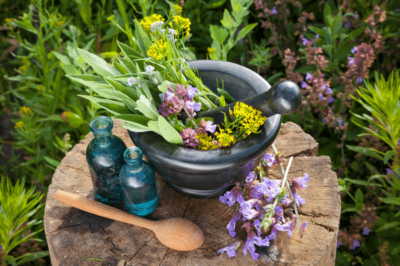

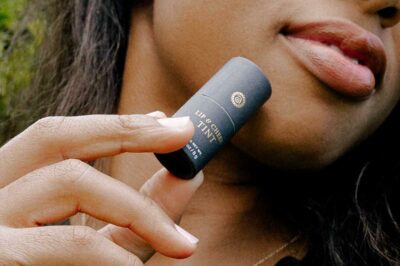

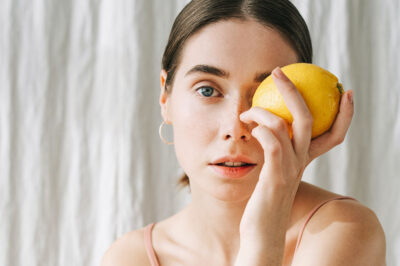
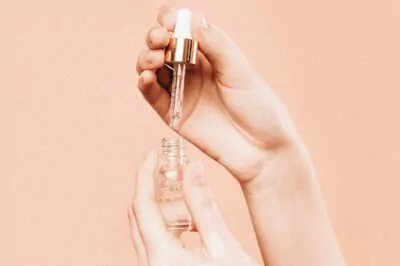

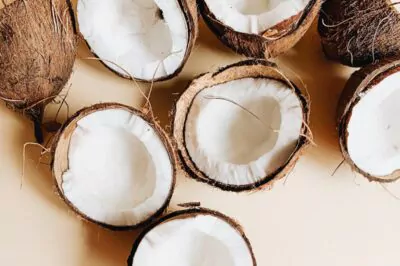
Great post! Just to keep everyone safe, use essential oils at 2% dilution rate (not the 3% mentioned). For products to be used on delicate face skin, use at 1% or lower. These are IFRA (ifraorg.org guidelines). Also, it’s important to educate yourself on sensitivity issues that are very common by using some essential oils (cinnamon, clove, lemongrass, pine). We all want to make safe skin care products.